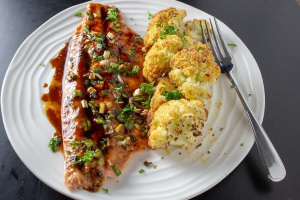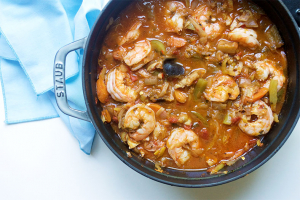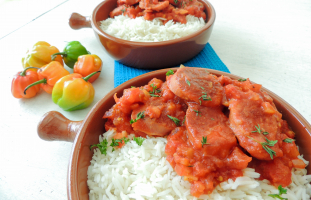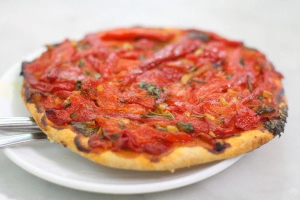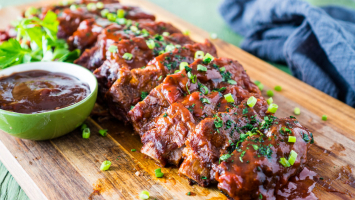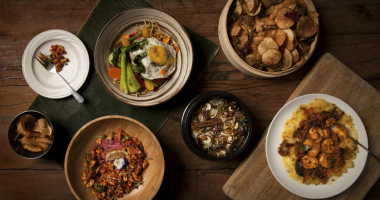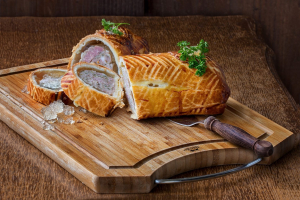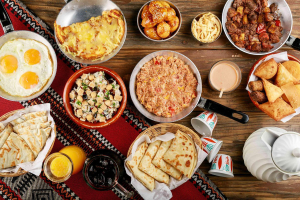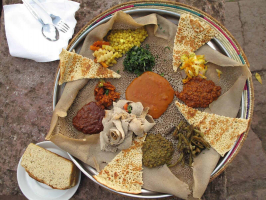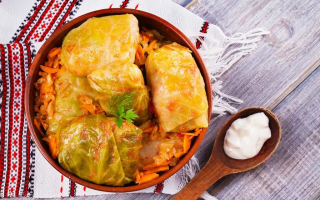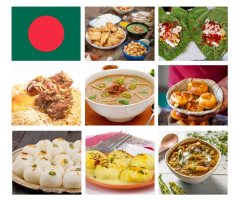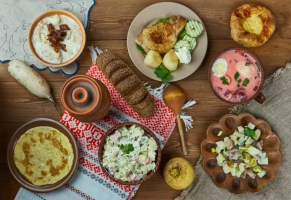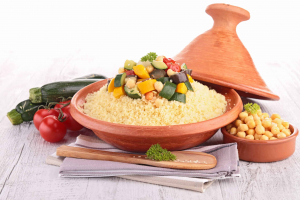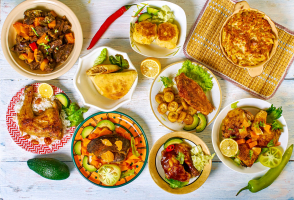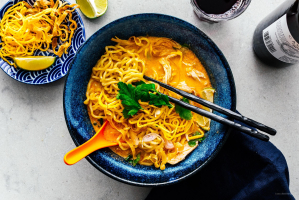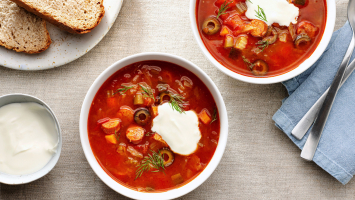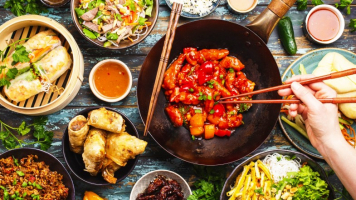Top 10 Best Foods In Nigeria With Recipe
Do you want to take your taste buds on a spectacular journey? If your answer is "yes," then you need to visit Nigeria. As a West African country with a wide ... read more...variety of ethnic communities, Nigeria has a varied and rich culinary tradition. They have a myriad of delicacies depending on what part of the country a person is in. Numerous ingredients and staples are cut across state borders as well. Here are the top 10 most delicious dishes in Nigeria.
-
This is one of Nigeria's most popular dishes, and it is consumed throughout the country. You may be wondering what is so highly rated, and you will be surprised to learn that it is simply rice cooked with tomato, onion, pepper, and a few other spices. It's frequently accompanied by vegetables, chicken or beef, and fried fish. This meal is famous not only in Nigeria, but also in Ghana and other West African countries.
Ingredients
- 1/3 cup oil (vegetable/canola/coconut, not olive oil), 6 medium-sized fresh plum/Roma tomatoes, chopped, OR a 400-gram tin of tomatoes, 6 fresh, red poblano peppers (or 4 large red bell peppers), seeds discarded, 3 medium-sized red onions (1 sliced thinly, 2 roughly chopped), divided, 1/2 to 1 hot pepper, or to taste (yellow Scotch bonnets are my favourite), 3 tablespoons tomato paste, 2 teaspoons (Caribbean/Jamaican-style) curry powder, 1 teaspoon dried thyme,2 dried bay leaves, 5 to 6 cups stock (vegetable, chicken, or beef) or water, divided, 2 teaspoons unsalted butter (optional), divided, 4 cups uncooked converted long-grain rice or golden sella basmati, rinsed, Salt, to taste, Black and white pepper, to taste, Extra: sliced onions, tomatoes
Directions
- Combine tomatoes, red poblano (or bell) peppers, chopped onions, and Scotch bonnets in a blender with 2 cups stock and blend until smooth, about a minute. There should be about 6 cups of mixed mixture. Bring to a boil in a large pot/pan, then reduce to a low heat and cover for 10 to 12 minutes.
- Heat the oil in a big pan and add the chopped onions. Season with a touch of salt and stir-fry for 2 to 3 minutes on medium heat before adding the bay leaves, curry powder, and dried thyme, as well as a pinch of black pepper. After that, add the tomato paste and continue to stir for another 2 minutes. Add the reduced tomato-pepper-Scotch bonnet combination, stir, and reduce by half over medium heat with the lid on for 10 to 12 minutes. This is the stew that will give the pot its identity.
- Add 4 cups of the stock to the cooked tomato sauce and bring it to boil for 1 - 2 minutes.
- Add the rinsed rice and butter, stir, cover with a double piece of foil/baking or parchment paper and put a lid on the pan—this will seal in the steam and lock in the flavour. Turn down the heat and cook on low for 30 minutes.
- Stir rice—taste and adjust as required.
- If you like, add sliced onions, fresh tomatoes and the 2nd teaspoon of butter and stir through.
- One more step is required to prepare Party Rice. Now, Party Rice is essentially Smoky Jollof Rice, which is cooked over an open fire in the traditional way. On the other hand, you can get the identical results on a stovetop. Here's how to do it: Turn raise the heat to high and cover the pan, allowing the rice to "burn" for 3 to 5 minutes. The rice will crackle and snap as it cooks, and it will smell toasted. Remove from the heat and set aside to "rest" until ready to serve. The smokier it is, the longer the lid is left on. Let the celebrations begin!
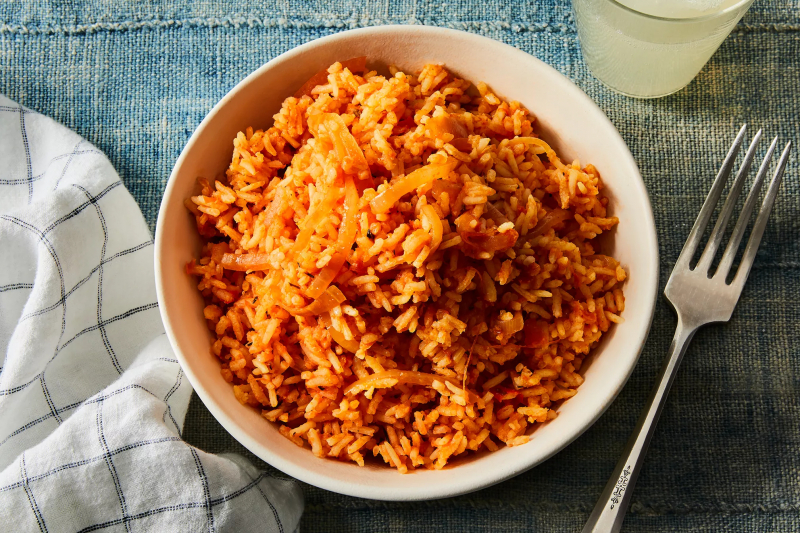
Photo: food52.com 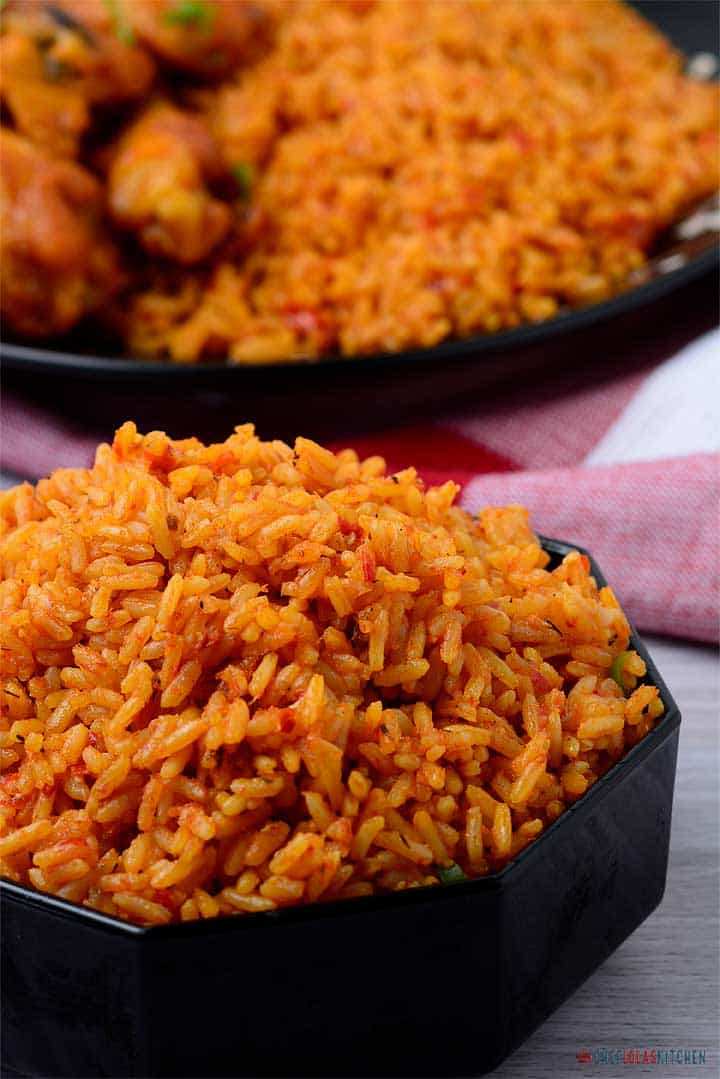
Photo: cheflolaskitchen.com -
This is without a doubt Nigeria's most popular staple meal. It is consumed by the vast majority of Nigerian homes, regardless of geography or race. Cassava is used to make garri. Cassava is picked, peeled, rinsed, and pulverized before being used. Before being sieved and cooked in a heated pan, the crushed cassava is drained of water, starch, and hydrocyanic acid. Garri is the end product of this process. Garri can then be used to make Eba by simply pouring hot water over the desired amount of garri grains in a basin. Eba can be served with any Nigerian soup, including Egusi, Okro, Banga, Afang, and others.
Ingredients
- 8 cups Water, 4 cups Gari
Directions
- Eba or garri is a Nigerian staple food consisting of cassava flour combined with hot water. The combination is traditionally mixed with a large wooden spoon until it firms up, and is then rolled into a ball. Eba is served with almost all Nigerian soups. such as Egusi Soup or other soups. Traditionally this dish is eaten communally using the hands. A small amount is rolled in the hand, then dipped into the soup before being eaten. You can also experiment and use different types of flour such as yam flour,semolina flour or even Farina. It’s very sticky so I suggest serving with a small bowl of water to dip your fingers in before.
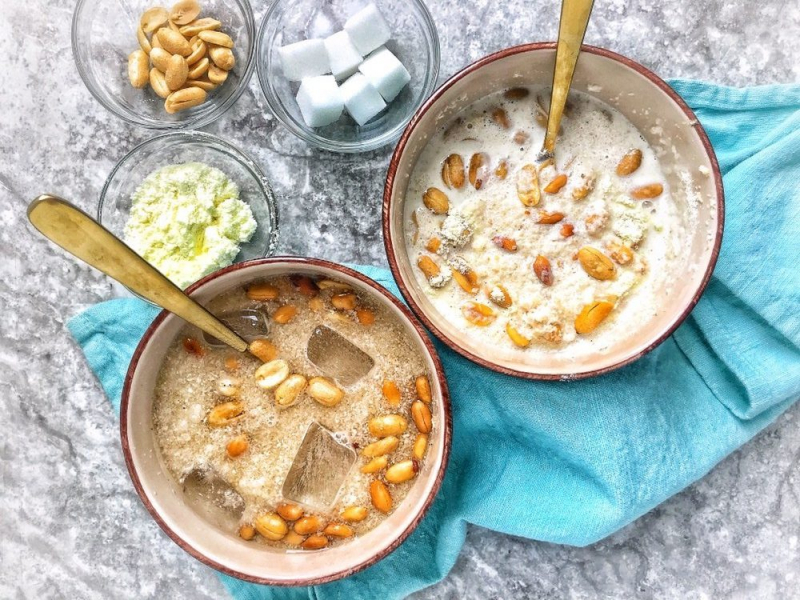
Photo: guardian.ng 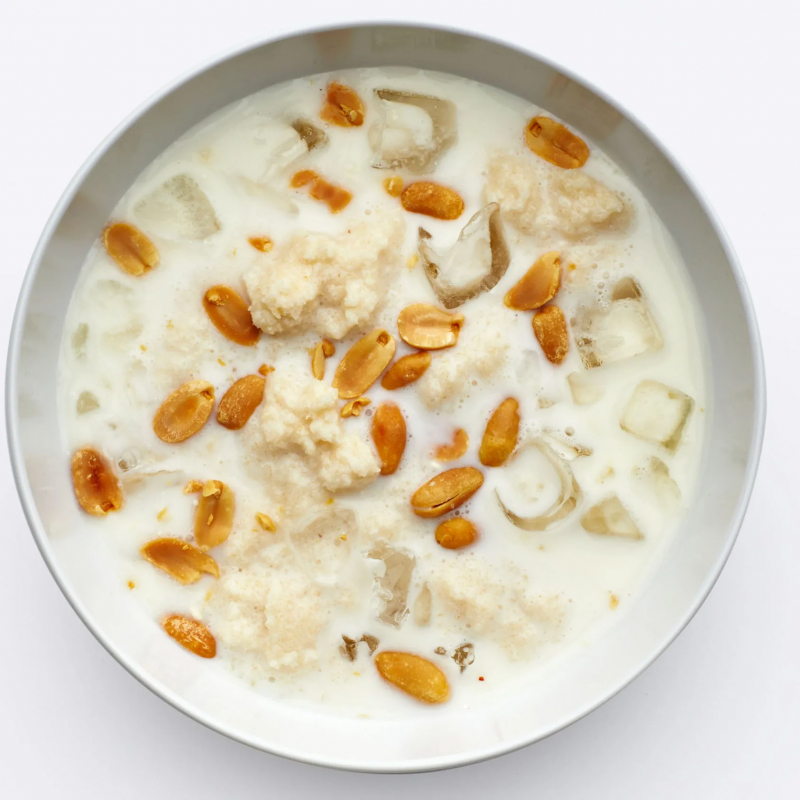
Photo: bonappetit.com -
This is a very soft dish that can be found in many Nigerian households and restaurants. It goes well with a variety of soups, including Ogbono, Egusi, veggie, and Afang. To make pounded yam, peel the necessary amount of yam, carefully wash it, and boil it until soft. The boiled yam is then mashed until it becomes a mushy mash in a mortar. The Yoruba people of Western Nigeria are famed for their love of pounded yam, but it is also consumed by the Igbo people of Eastern Nigeria.
Ingredients
- 2 cups yam flour, 2 cups Water
Directions
- Peel the skins off the yams and slice them into about ½ inch thickness.
- Rinse and place the yams in a pot and add enough water to the level of the Yam. Rinse about once or twice till you get clear water.
- Cover and cook the yams for about 30 minutes, checking every 10 minutes or thereabout until the yams are fork tender.
- Pound or blend into a dough-like consistency until it’s completely smooth with no yam chunks left.
- The amount of water you will need to boil the yam will vary depending on how dry the yam is. Fresh yams in the early season of the harvest will take less water while yams harvested in the later season will require more water.
- This also applies during the pounding, you will need more water for the dry yam and less water for the less dry yams.
- Serve with your favorite soup or stew
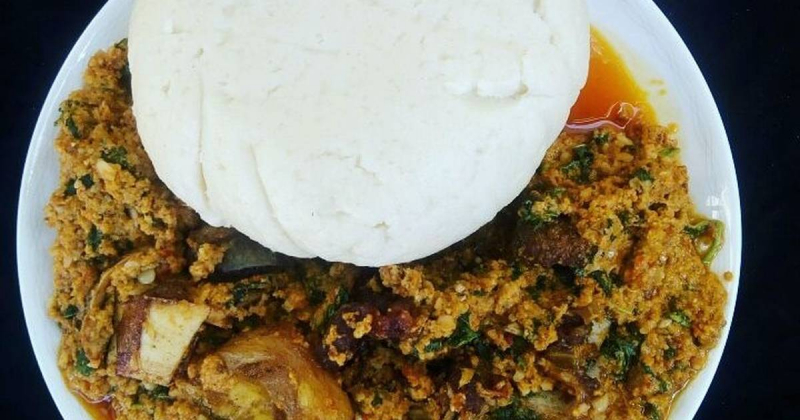
Photo: cookpad.com 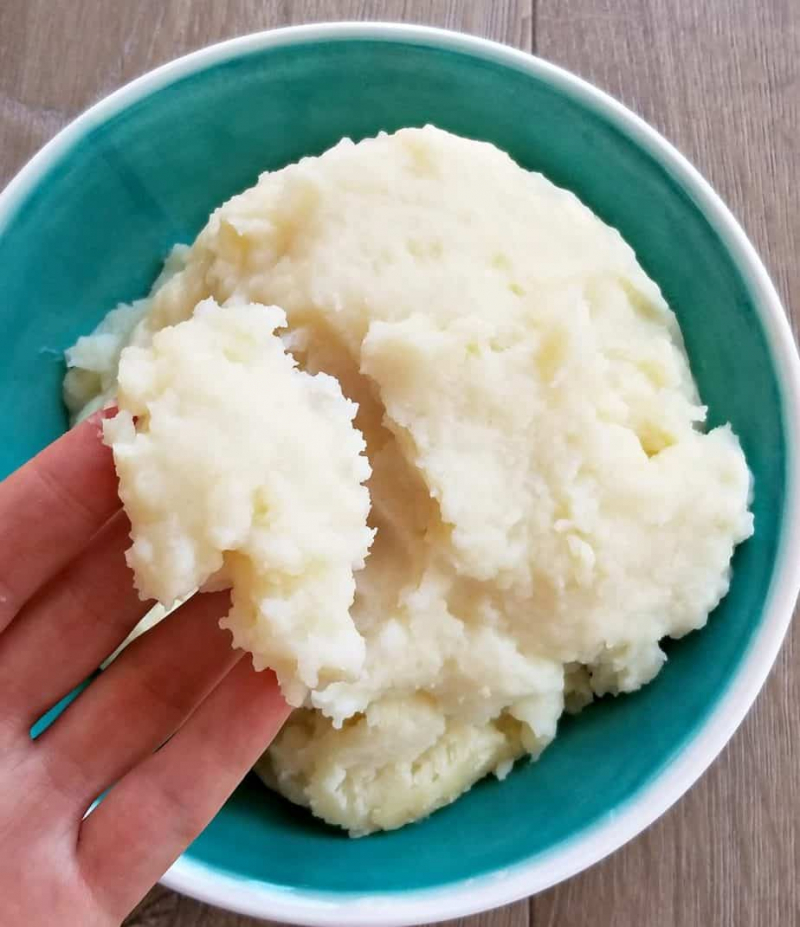
Photo: canadiancookingadventures.com -
This is one of Nigeria's most popular soups. It is consumed in a number of households, particularly during celebrations. This soup's distinct texture and fluffiness are two characteristics that distinguish it as a particular Nigerian delicacy. Stockfish, red oil, meat, stockfish, vegetables, seafood, onions, and other condiments are used to make Egusi soup, which is made from processed melon seed. The soup is accompanied by pounded yam, garri, amala, and other ingredients.
Ingredients
- 1 cup blended onions (about 3- 5 and fresh chilies, to taste), 4 cups egusi (melon seeds, ground or milled), 1⁄2 – 1 cup palm oil, 2 teaspoons fresh Une (Iru, locust beans), Salt (to taste), Ground crayfish (to taste), 7– 8 cups stock, Cooked Meat & fish (quantity and variety to personal preference), 2 cups cut pumpkin leaves, 1 cup waterleaf (cut), 3 tablespoons bitter leaf (washed)
Directions
- In a large pot, heat the palm oil on medium for a minute and then add the Une.
- Slowly add the stock and set on low heat to simmer.
- Scoop teaspoon size balls of the egusi paste mixture into the stock. Be sure to keep ball shape.
- Leave to simmer for 20 – 30 minutes so the balls cook through.
- Add the meat and fish and other bits which you’d like to use.
- Add cut-up pumpkin leaves.
- Add the waterleaf.
- Stir and put a lid on the pot and allow cook for 7–10 minutes, till the leaves wilt.
- Add the bitter leaf. Leave the lid off while the cooking finishes for another 5-10 minutes.
- Stir, check seasoning and adjust accordingly.
- Now you can sit back and enjoy your delicious Nigerian Egusi Soup!
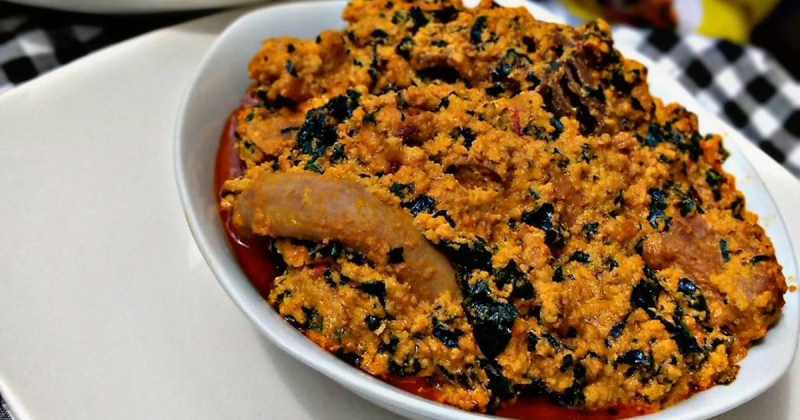
Photo: cookpad.com 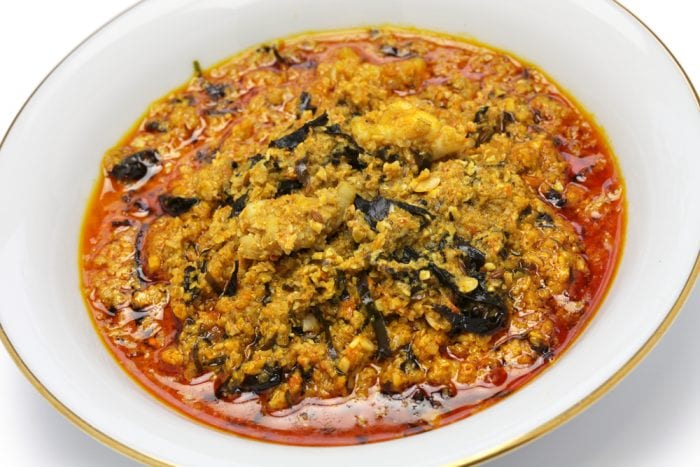
Photo: demandafrica.com -
Just seasoned and cooked over an open flame, this is simply well-cut beef. Fresh cabbage, tomatoes, and onions are offered alongside. It's commonly eaten in the evening, wrapped in old newspapers or aluminum foil. The Hausa people of Northern Nigeria are known for their spicy delicacy. Before grilling, the meat is frequently seasoned with a specific spice blend called Yaji.
Ingredients
- 1 cup salted peanuts, 1 tablespoon paprika, 2 teaspoons onion powder, 2 teaspoons ground ginger, 1 teaspoon crushed red pepper flakes, 1 teaspoon garlic powder, 1 beef tri-tip roast or beef top sirloin steak (2 pounds), thinly sliced against the grain, 2 tablespoons canola oil, 1 teaspoon salt, 1 medium onion, cut into wedges, 1 large tomato, cut into wedges, Fresh cilantro leaves
Directions
- Place peanuts in a food processor; process until finely chopped. Add paprika, onion powder, ginger, pepper flakes and garlic powder; pulse until combined.
- Place beef in a large bowl or shallow dish. Drizzle with oil; sprinkle with salt. Toss to coat. Add peanut mixture; turn to coat. Refrigerate, covered, for 2 hours. Drain beef, discarding marinade.
- Thread beef onto metal or soaked wooden skewers. Grill, covered, over medium-high heat until beef reaches desired doneness, 10-15 minutes, turning occasionally. Serve with onion, tomato and cilantro.
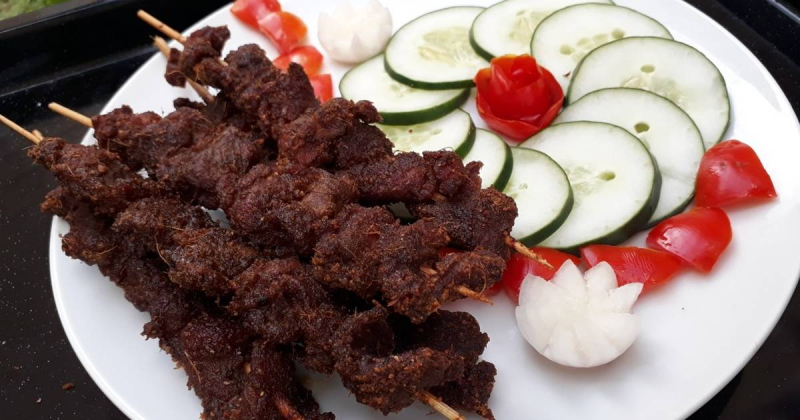
Photo: cookpad.com 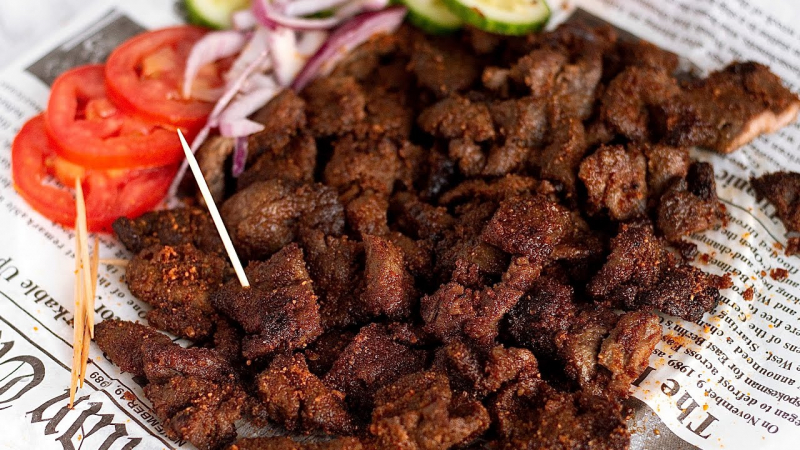
Photo: youtube.com -
Another renowned Nigerian delicacy is this. In the northern areas of the country, it is known as Kosai. It's just a bean cake that's been deep fried in palm or groundnut oil. After soaking the beans in water to remove the skin, they are crushed into a mash and deep-fried. A different type of Akara can be made by frying grated water yam.
Ingredients
- 2 Cups black-eyed peas dry, 1 Small Habanero Chili, 3 ounces Red bell pepper approximately half of one red bell pepper, 1 small Onion finely chopped, Salt to taste, 1 Bouillon powder, 1/4 cup Water for blending - a little extra might be required, Vegetable Oil Enough for deep frying
Directions
- Soak the beans for 30 minutes or until the skin is bloated, then peel off the skin by rubbing it between your palms or pounding it a few times in a blender until it falls off.
- Fill a large mixing basin halfway with water and gently swirl the beans around to allow the skin to float. Pour the skins into a colander to drain. This process should be repeated until the beans are clean.
- Fill the blender halfway with clean beans, then add the water, red bell pepper, habanero pepper, salt, bouillon powder, and crayfish. Blend until smooth.
- In a large mixing bowl, whisk together the batter until light and fluffy. 3–4 minutes whisking by hand or a minute or two with an electric hand mixer
- Add the finely diced onion and gently fold in one direction using a wooden spoon or spatula.
- In a pan, heat some oil (enough to deep fry the Akara). To minimize congestion, drop heaping spoonful of fritter batter into the hot oil in batches. For even browning, turn once or twice in between. Cook the fritters for 5 to 6 minutes, or until golden brown all over.
- Remove fritters from the pan and drain on a paper towel-lined plate.
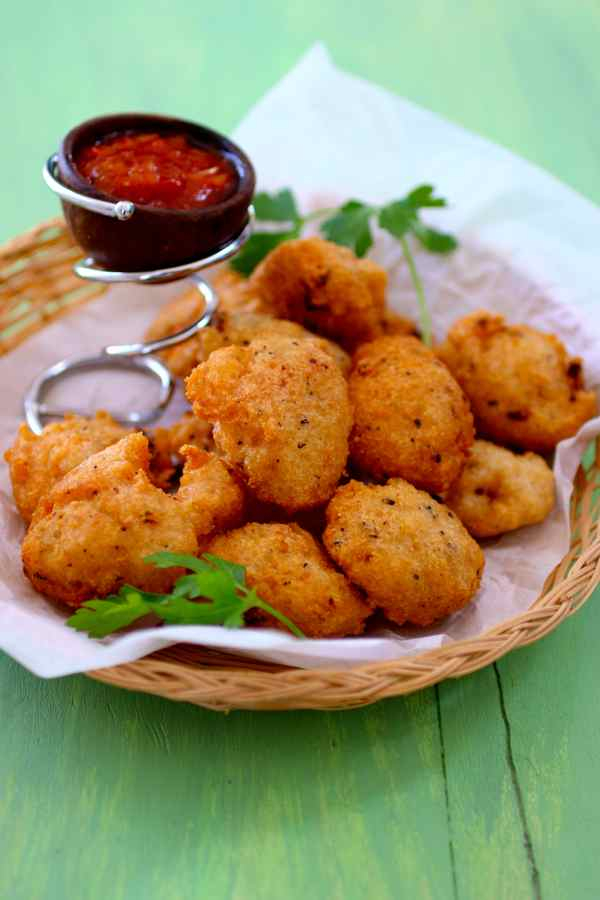
Photo: 196flavors.com 
Photo: myactivekitchen.com -
Moi Moi is one of the truly amazing cuisines in Nigeria that will blow your taste buds away. It is a delectable dish that has gained popularity due to its distinct flavor. It is created from processed beans in the same way that Akara is, instead of being fried, it is boiled. Moi Moi can be served with fish, egg, or crayfish as a garnish. Oil, tomatoes, pepper, salt, and a few spices are the fundamental ingredients. It can be eaten on its own or with soaking garri, pap, or custard; do what you want.
Ingredients
- 3 cigar cups or 750g Beans (Brown/Black eyed), 5 tablespoons ground crayfish, 4 big stock cubes, 1 habanero pepper, 2 teaspoons ground nutmeg, 3 tatashe peppers or 800g watery tomato puree (sold outside Nigeria), 2 big onions, 20cl vegetable oil, 2 litres of cool or warm water, Salt (to taste)
Instructions
- Soak the Beans for 15 minutes depending on how dry your beans are. The drier beans tend to be ready for peeling faster than the less dried beans.
- Pour the Beans in the Blender and add twice as much water as the Beans (by volume) blend the Beans for 3-4 seconds per time and repeat this 3 to 4 times - Remember we are peeling the beans and not blending them.
- Pour the beans back into a large bowl and add enough water to fully cover the Beans. Now agitate the Beans with your fingers and the skin will float then quickly separate the skin from the Beans by pouring through a sieve.
- Once that is done, pour the peeled Beans (the skinless Beans) inside a Blender, together with the Red Pepper, Habanero, and Onion - Blend to the smoothest consistency you can ever get.
- Combine the blended mixture with the remaining ingredients except for the boiled Eggs.
- Spray or brush the container you will be using with oil. Pour the mixture into the container and place the boiled egg over it. Cover it with a lid or seal with foil paper.
- Line the base of a large pot with either foil paper, sticks, leaves. Add enough water to the pot. (Add just enough not to submerge the moi moi bowls). This is to prevent the Moin moin from sticking to the base of the pot in case the water dries up before the moin moin gets done.
- Arrange the Moin moin inside the Pot and cook till done. This should take about 45 minutes to 1 hour a little more or less depending on the quantity of the Moin moin mixture in each container.
- To check for doneness, insert a toothpick into the middle of the Moin Moin/Moi. The toothpick should come out fairly clean and not wet.
- Remove from heat and serve.

Photo: pulses.org 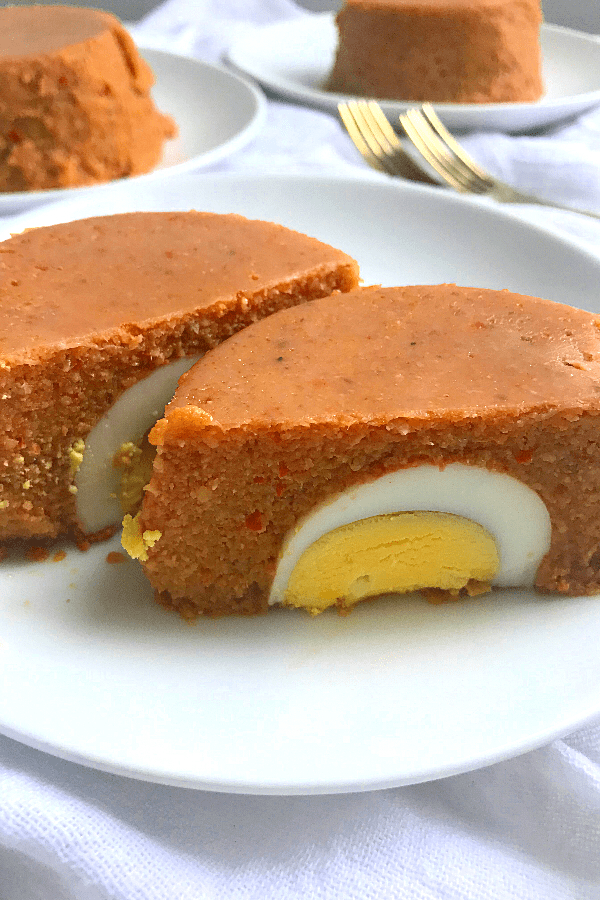
Photo: mydiasporakitchen.com -
This is a popular delicacy that can be found in practically every section of the country. It frequently includes a variety of meats such as beef, chicken, mutton, or fresh fish. It's most commonly found in bars, where it's served with beer. Because of the natural spices used in its preparation, it is a highly healthful soup. On the tongue, a smidgeon of pepper soup creates a distinctive taste that will keep you coming back for more. It's spicy, tasty, and has a pleasant scent.
Ingredients
- 1 lb lean ground beef, 2 Tbsp olive oil, divided, Salt and freshly ground black pepper1 small yellow onion chopped (1 cup), 1 cup chopped red bell pepper (a little over 1/2 of a medium), 1 cup chopped green bell pepper, 2 cloves garlic, minced, 2 (14.5 oz) cans petite diced tomatoes, 1 (15 oz) can tomato sauce, 1 (14.5 oz) can low-sodium beef broth, 2 1/2 Tbsp chopped fresh parsley, plus more for garnish, 1/2 tsp dried basil*, 1/2 tsp dried oregano, 1 cup uncooked long grain white or brown rice (I love both options), Cheddar or mozzarella cheese, for serving (optional)
Instructions
- In a large pot heat 1 Tbsp olive oil over medium heat, once hot add beef to pot and season with salt and pepper. Cook, stirring occasionally while breaking up beef, until browned. Drain beef and pour onto a plate lined with paper towels, set aside.
- Heat remaining 1 Tbsp olive oil in pot then add onions, red bell pepper, green bell pepper and saute 3 minutes, then add garlic and saute 30 seconds longer.
- Pour in diced tomatoes, tomato sauce, beef broth and add parsley, basil, oregano and cooked beef, then season with salt and pepper to taste. Bring just to a light boil, then reduce heat to low, cover and simmer, stirring occasionally, 30 minutes.
- While soup simmers, prepare rice according to directions listed on package, then once soup is done simmering stir in desired amount of cooked rice into soup.
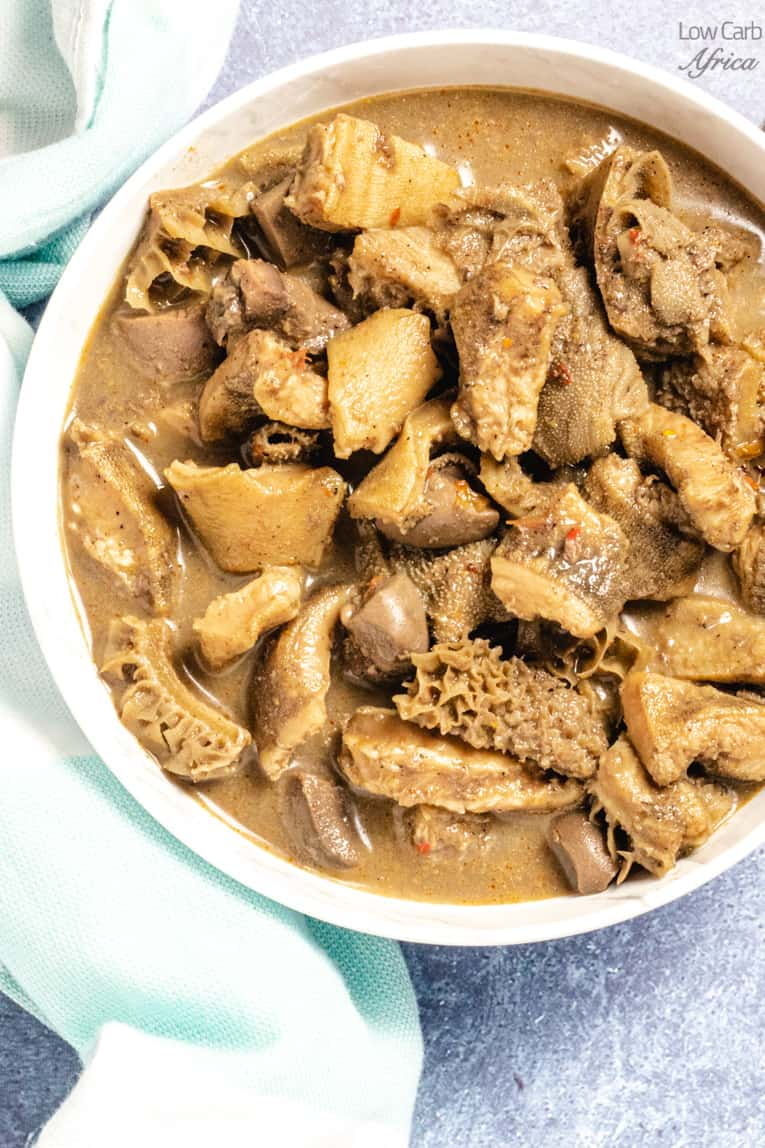
Photo: lowcarbafrica.com 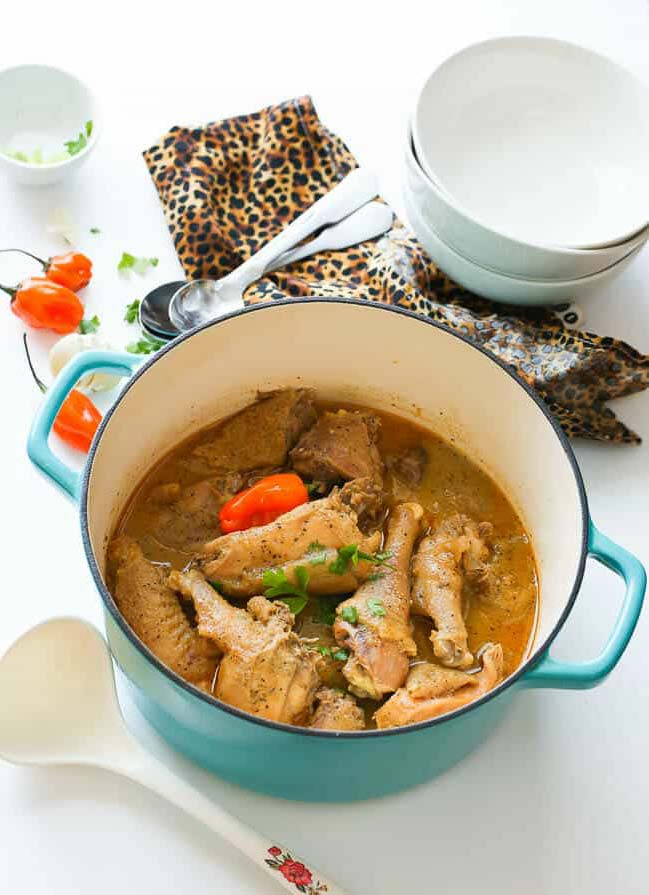
Photo: afrosmartshop.com -
This soup is highly popular among the Igbo people of Eastern Nigeria. Nkwobi is a traditional delicacy made from cow legs and head, and it's usually decorated with Utazi leaves and palm oil. It's frequently served with a glass of palm wine, which is said to be the greatest beverage for flushing it out of the stomach.
Ingredients
- 2kg (4.4 lbs) cow foot (cut into sizeable pieces), 20cl (200ml) Palm Oil, 1 tablespoon powdered edible potash (Akanwu/Kaun/Keun), 1 teaspoon ground Ehu seeds (Calabash Nutmeg), 2 tablespoons ground crayfish, 2 habanero peppers (or to your taste), 1 medium onion2 big stock cubes
- Salt (to taste)
Instructions
- Wash and put the cow foot chunks in a pot.
- Add the stock cubes (crushed) and the chunks of onion.
- Add a small quantity of water and start cooking at medium heat till well cooked. Add just enough water to prevent burning as you cook. There should not be any stock (water) in the pot when the meat is done.
- While the meat is cooking, pour the palm oil into a clean dry pot.
- Pour in the potash mixture (sieved) into the oil.
- Stir with a wooden spatula as you pour the potash. You'll notice the palm oil begin to curdle and turn yellow.
- Keep stirring till all the oil has turned yellow.
- Add the ground crayfish, pepper and ehu seeds. Stir very well till they are all incorporated.
- When the meat is done, add salt, stir and cook till all the water has dried.
- Add the well done cow foot to the palm oil paste and stir very well with the wooden spatula.
- Put it back on the stove/cooker and heat till the Nkwobi is piping hot, stirring all the time to make sure it does not burn.
- To prepare the garnish, cut the onions into rings and cut the utazi into long thin slices.
- Serve the Nkwobi in a wooden mortar as shown in the image above.
- Add the thin slices of utazi and onion rings on top for the full effects.
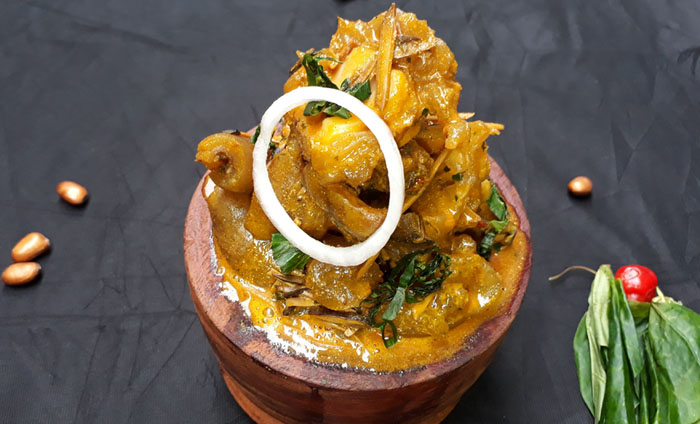
Photo: mydiasporakitchen.com 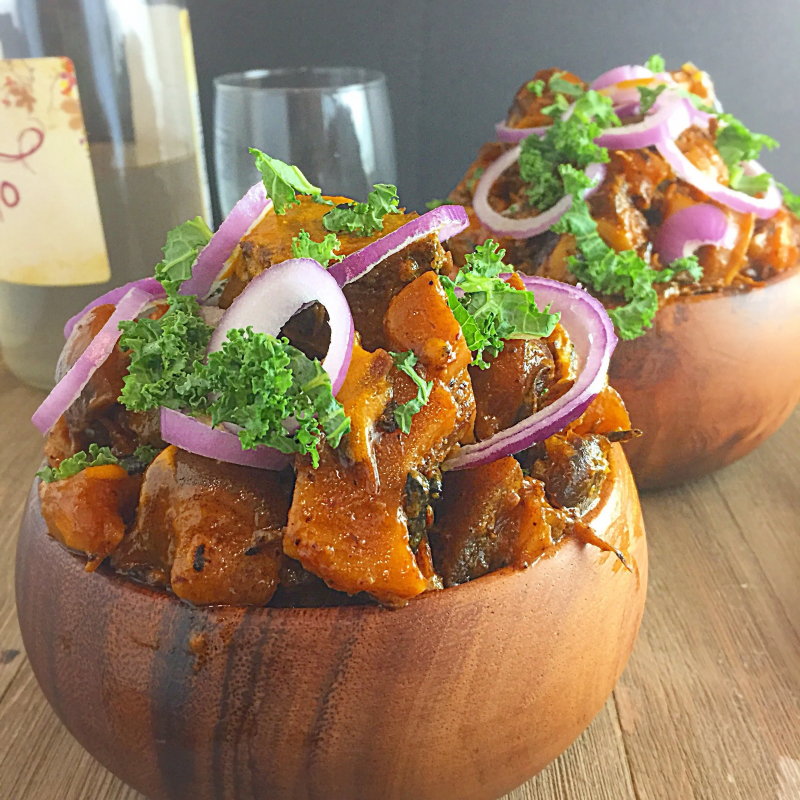
Photo: mydiasporakitchen.com -
This is a very popular delicacy among the Yoruba people of Western Nigeria. Its origins can be traced back to the Benin Republic. Cooked mashed beans with pepper sauce are known as Ewa Agoyin. This sauce contains not just pepper, but also onion, tomato, crayfish, and a few spices. This mix creates a flavor that will entice you to want more.
Ingredients
- For the Beans
- 1 lb Beans
- 6-8 Cups Water
- salt to taste
- For the Sauce
- 3/4 Cup Chili Dried
- 2 Red Bell Pepper Dried
- 1 Medium Onion
- 1 Tsp Ginger
- 2 Tsp Cray Fish
- 2 Seasoning Cubes
- Salt To Taste
- 1 Cup Palm Oil
Instructions
- Rehydrate the dried Chilies and bell peppers by soaking them in water overnight or pour hot boiling water over them for about 2 hours
- Blend the rehydrated Peppers with the onions, ginger, and about a quarter cup of water and set aside.
- Preheat the Palm oil in a pan on medium heat until the oil is very hot but not bleached.
- Add the sliced onion and let it cook for about 10 to 15 minutes. We want it browned and not black or burnt.
- Stir in the blended peppers and cook for about 10 minutes
- Add the seasoning cubes, crayfish, and salt to taste.
- Leave it to cook for another 5 to 10 minutes; by this time, the color of the pepper would have changed from bright red to dark red. If not, cook for some additional time.
- Serve the Sauce over the Ewa Agoyin (Ewa Aganyin) or eat with your Agege Bread and Enjoy!
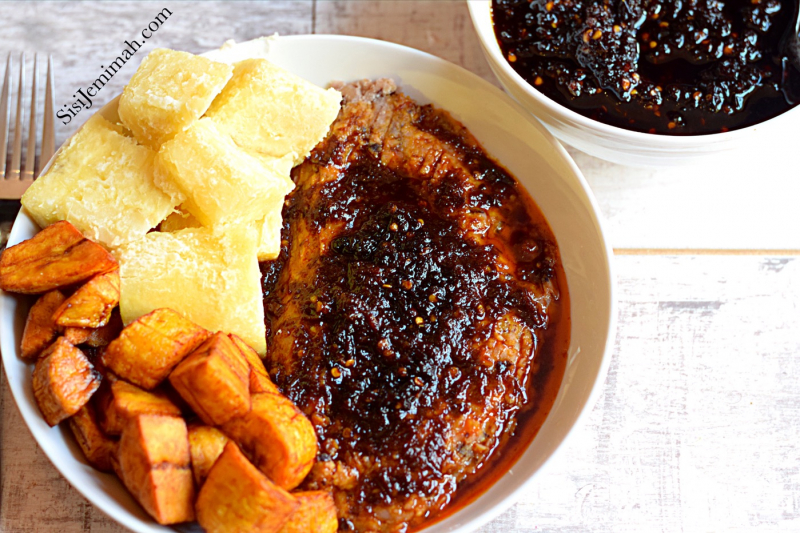
Photo: sisijemimah.com 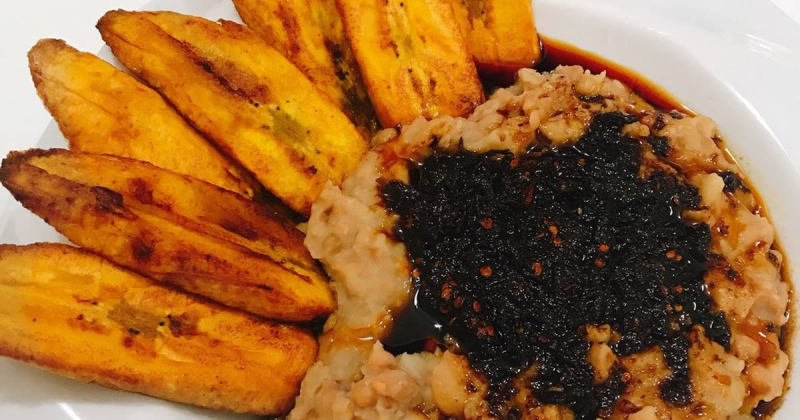
Photo: cookpad.com












